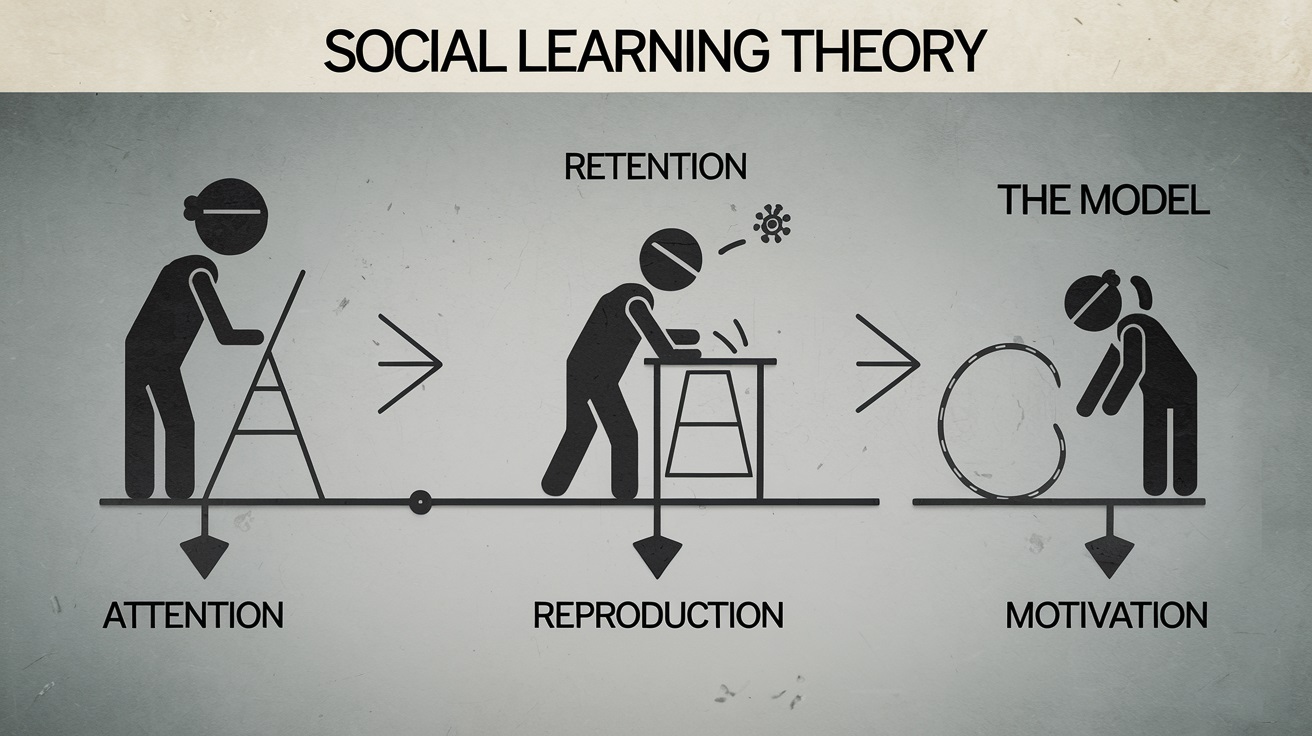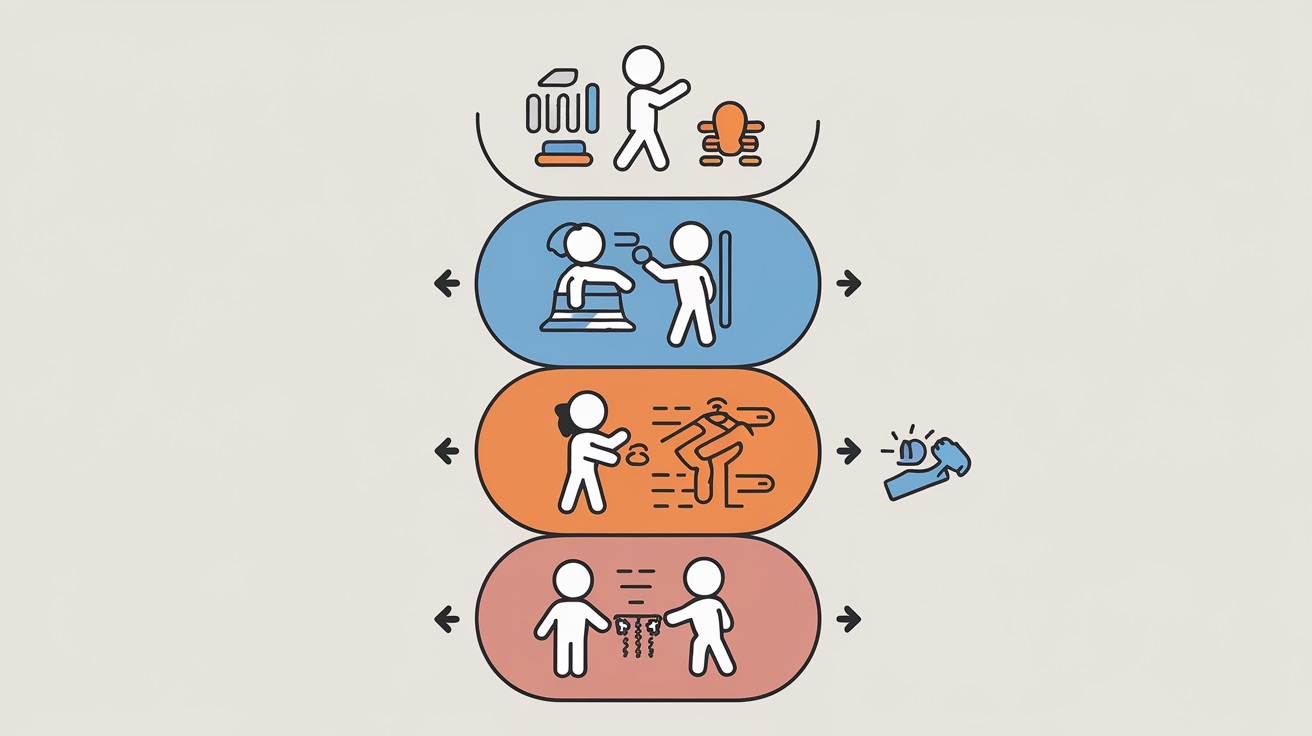
Social learning is transforming how organizations and educational institutions approach training and development. Instead of relying solely on traditional, instructor-led methods, social learning focuses on collaboration, interaction, and shared experiences. Using these strategies, teams can boost participation, strengthen knowledge retention, and cultivate an environment where continuous learning thrives.
This article will discuss practical steps for implementing social learning strategies, ensuring your approach is practical, relevant, and actionable.
What is Social Learning?
Social learning is a process where people learn by observing others, engaging in discussions, and sharing experiences. Albert Bandura's social learning theory explains that behavior is influenced by the environment and interactions, making peer-to-peer learning a powerful tool in education and professional development.

Why Social Learning Matters Today
Collaboration and teamwork are becoming essential in workplaces and educational settings. Whether navigating hybrid work environments or fostering group learning in classrooms, social learning provides a flexible and engaging way to share knowledge. Gallup research reveals that 80% of employees feel more engaged when learning involves collaboration.
Implementing a peer-learning program for software skills in my workplace reduced training times and significantly boosted employee confidence.
Benefits of Social Learning Strategies
1. Improved Engagement and Participation
People thrive when they feel involved. Social learning allows individuals to share their perspectives, making the process more dynamic and inclusive.
Learners are 50% more likely to complete training programs that include collaborative elements.
2. Better Knowledge Retention
Learning through real-life examples and discussions helps embed knowledge more effectively.
Studies show that participants retain up to 70% more information when learning socially than traditional methods.
3. Cost-Effectiveness
Social learning minimizes the need for extensive resources using tools like forums, chats, or online communities.
Steps to Implement Social Learning Strategies Effectively
1. Identify Your Goals and Needs
Before implementing, take a step back to assess your organization's goals. What are the learning gaps? Do you need to improve team collaboration, upskill employees, or efficiently onboard new hires?
Many organizations need help with engagement during mandatory training sessions. Conduct surveys to identify what learners value most in their development process.
2. Choose the Right Tools and Platforms
The tools you use will directly impact the effectiveness of your social learning strategy. Platforms like Slack, Microsoft Teams, and Yammer enable collaboration and knowledge sharing. Companies using collaborative tools see a 25% increase in productivity (Source: Deloitte).
Key Features to Look For:
-
User-friendly interface.
-
Integration with existing tools.
-
Real-time collaboration capabilities.
3. Build a Culture of Collaboration
Social learning thrives in environments that encourage open communication and trust. These are necessary for participants to be able to share ideas or ask questions.
Introduce a recognition program that rewards employees who actively contribute to discussions or forums. Leaders should lead by example by using these platforms to normalize participation.
4. Design Interactive and Engaging Modules
Static, text-heavy learning materials can deter participants. Instead, focus on creating engaging content that encourages interaction. Training programs with interactive content see 60% higher completion rates (Source: Forbes).
Ideas for Engagement:
-
Role-playing exercises.
-
Simulations of real-world scenarios.
-
Gamification elements like leaderboards and quizzes.
5. Encourage Peer-to-Peer Learning
Encouraging employees or students to learn from each other can strengthen collaboration and improve skill-sharing. Google's "20% Project" allows employees to spend time learning and collaborating on innovative ideas, fostering creativity and teamwork. Create mentorship programs where experienced individuals guide newer team members.
6. Monitor, Evaluate, and Refine Your Strategy
Every strategy is flawed from the start. Regularly monitoring your social learning programs ensures they remain relevant and practical. Organizations that periodically refine their learning strategies achieve 35% better outcomes (Source: LinkedIn Workplace Learning Report).
Metrics to Track:
-
Participation rates.
-
Feedback from learners.
-
Improvements in skills or performance.
Challenges in Implementing Social Learning
While social learning offers numerous benefits, it has challenges. Identifying and taking proactive steps to address these challenges is crucial for successful implementation. Here are some common hurdles, along with practical ways to tackle them:
1. Resistance to Change
Many employees or learners are accustomed to traditional, instructor-led training methods and may hesitate to adopt new learning methods. This reluctance often comes from unfamiliarity or unease with moving away from established routines.
Solution:
Highlight the benefits of social learning by sharing success stories and testimonials from similar organizations or teams—for instance, present data showing improved engagement or productivity from other groups that embraced social learning. Additionally, involve early adopters or influential team members to act as advocates and demonstrate its effectiveness.
2. Technology Barriers
Not all organizations can access the latest technology or resources to implement sophisticated social learning platforms. This limitation can hinder the adoption of tools necessary for collaboration and knowledge-sharing.
Solution:
Begin with free or low-cost tools accessible to most employees. Platforms like WhatsApp, Google Workspace, or Trello can facilitate group discussions and collaborative learning without requiring significant investment. As the program gains traction, consider scaling to more advanced tools tailored to your organization's needs.
3. Lack of Engagement
Social learning depends heavily on active participation, but discussions can only lose focus or momentum with proper guidance. This lack of engagement often arises when participants need to see clear value in contributing or when conversations need direction.
Solution:
Assign moderators or facilitators to guide discussions, encourage participation, and keep the focus on relevant topics. These moderators can be team leaders, subject-matter experts, or even enthusiastic employees. Gamification techniques, such as rewarding active contributors with recognition or small incentives, can also boost engagement and motivation.
Best Practices for Social Learning
1. Blend Formal and Informal Learning
A combination of structured courses and informal discussions is critical to fostering a balanced learning environment. While formal courses provide learners with a foundational understanding of specific concepts or skills, informal discussions create opportunities for organic learning through real-life scenarios and peer interactions.
For example, you can pair classroom-style training sessions with group discussions or encourage employees to share their takeaways on internal chat platforms.
This blend ensures that learners grasp theoretical knowledge and see how it applies in practical situations, making the learning process more dynamic and engaging.
2. Foster Leadership Buy-In
Leadership can perform an essential role in the success of social learning. Managers and team leaders should proactively participate in and champion social learning initiatives to set an example for others.
When leaders share insights, ask questions, or engage in collaborative forums, they signal that learning is a priority for everyone. For instance, leaders can host informal Q&A sessions or lead team-based brainstorming activities.
Active participation fosters trust, inspires employees, and promotes a culture that values learning and collaboration at every level.
3. Provide Continuous Feedback
Feedback is the cornerstone of effective learning. Participants need regular insights into their progress to stay motivated and identify areas for improvement.
Create feedback loops by encouraging peer reviews, conducting periodic assessments, or using collaborative tools that track progress.
For example, a simple practice like weekly check-ins to discuss learning outcomes or challenges can make a big difference. This approach engages learners and helps them align their efforts with desired goals.
Real-Life Examples of Social Learning
1. IBM
IBM reduced training costs by 35% by introducing internal knowledge-sharing social platforms. Employees could collaborate in real time, leading to faster learning and better skill development.
2. Small Business Example
A small marketing agency used WhatsApp groups for project-based learning. The result? Cross-department communication improved significantly, saving time during campaign rollouts.
Key Takeaways
-
Social learning enhances engagement, retention, and collaboration.
-
Effective strategies require clear goals, the right tools, and a culture of openness.
-
Continuous evaluation ensures long-term success.
By following these steps, you can transform your learning environment into one that prioritizes collaboration, making the process enjoyable and impactful.
FAQs
-
What is social learning, and why does it matter?
-
Social learning focuses on collaboration and interaction, making learning more engaging and effective.
-
What are some tools for social learning?
-
Platforms like Slack, Microsoft Teams, and Yammer are great for fostering collaboration.
-
How can small businesses implement social learning?
-
Start with simple tools like WhatsApp or Trello and focus on informal peer interactions.
-
What challenges should I expect?
-
Resistance to change and technology limitations are common but can be addressed with proper planning.
-
How do I measure the success of social learning?
-
Track participation rates, feedback, and performance metrics to evaluate effectiveness.





